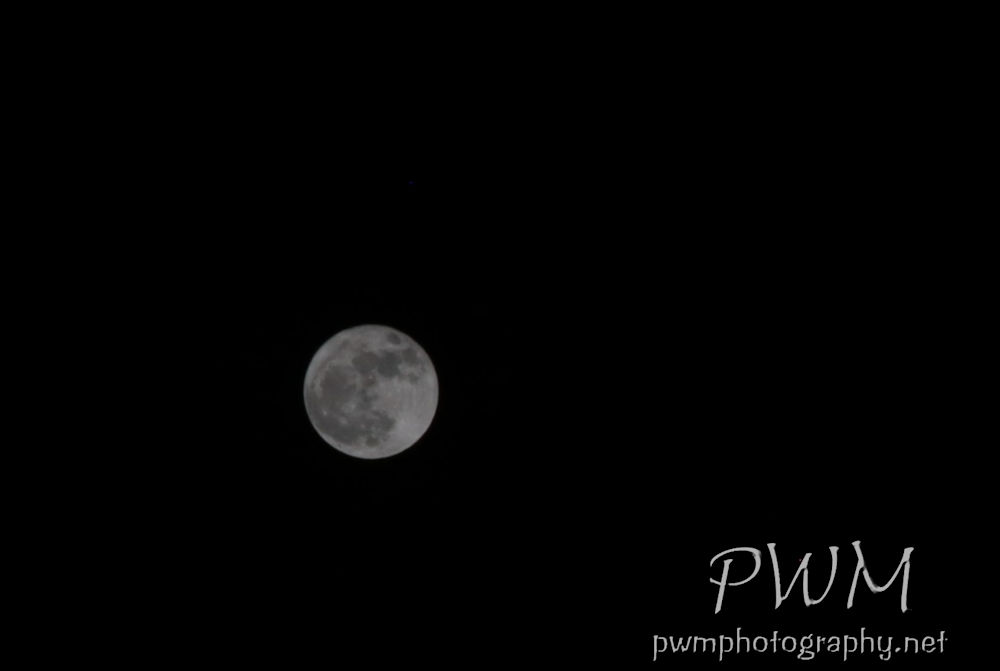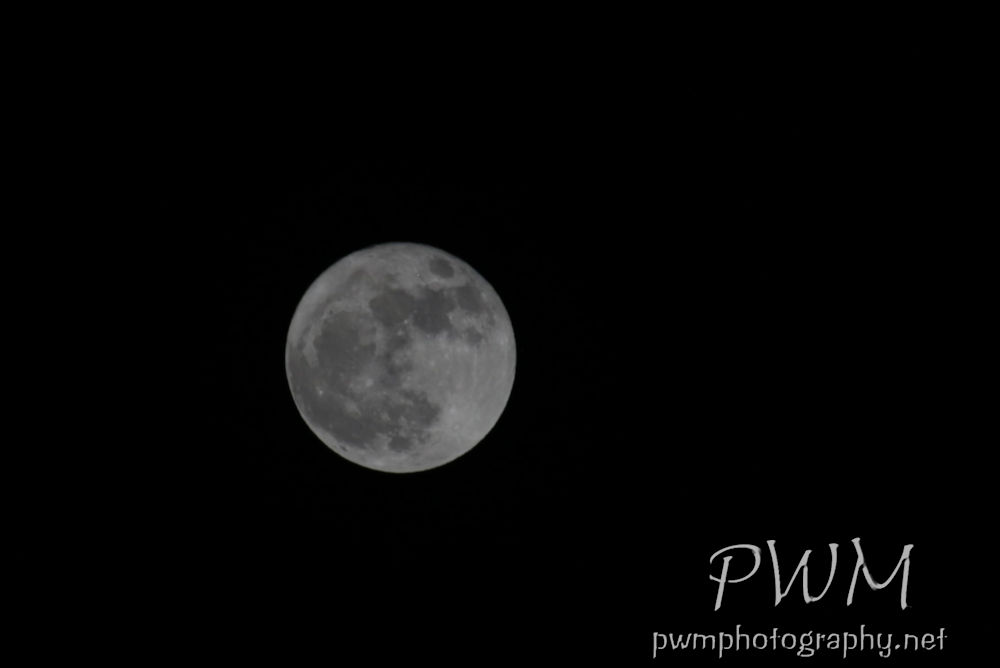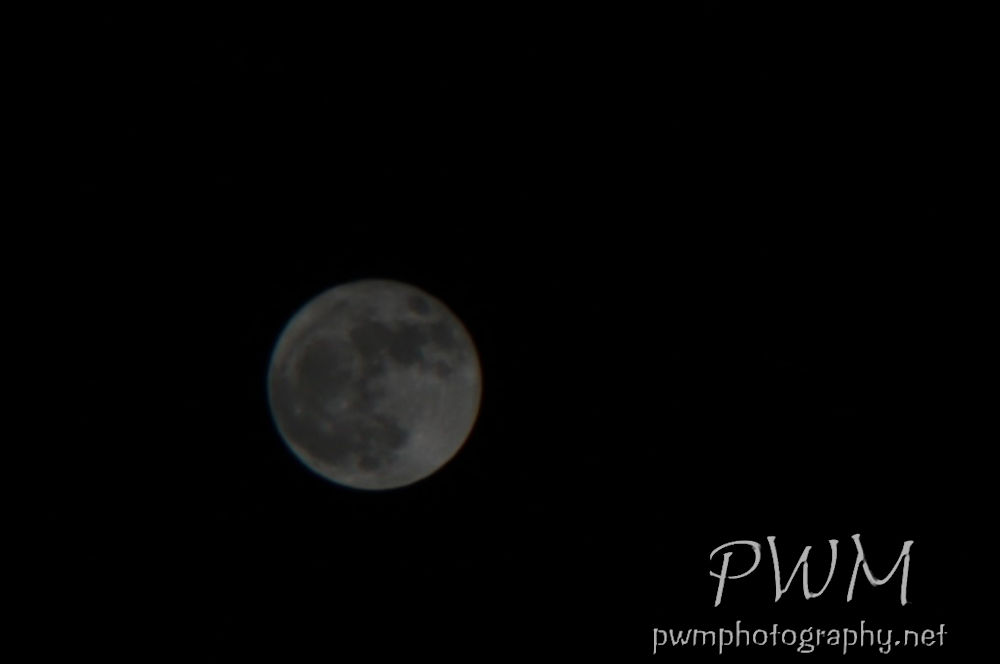Last night was a beautiful, mostly clear skies, night. And despite the city light pollution the full moon was clearly visible. There’s something about “the light that governs the night” that fascinates humankind. Around the full moon each month there are many photos that pop up as folks try to capture the beauty of our natural satellite. And each month on the forums there are all kinds of questions about the best settings to capture a good image of the moon. And what’s the best lens. And what’s the best tripod?
As folks who know me will attest, I tend to face a lot of things in life with a “Well, let’s give it a try and see what we get!” attitude. Whether it’s cooking something up for lunch, choosing the best height of the scope over the bore of the pellet rifle or what settings to use to capture a good image of the moon, “Let’s see what happens if…” is often my approach. Shucks, this isn’t about life or death, it’s about having fun and using what you’ve got.
Last night I decided to try my vintage lenses and my EF 75-300 Canon non-IS lens. And since I do not have a decent tripod available, all shots were taken hand held while sitting on the edge of the raised flowerbed in front of the house to provide best stability. I used a fast shutter speed and relatively high ISO, but experimented a bit to see what would give the best results considering the circumstances. So I started out with the Telesar Auto 1:2.8 135mm lens in the OM-EF adapter from Fotasy.

The image above is the best of the lot. The settings are in the image caption. 135mm telephoto isn’t usually considered the best for lunar photography, but it didn’t do too bad – all things considered. The image is as it came from the camera, but cropped down to show the subject better. It’s a bit soft, but what do you expect from a hand held 135mm lens? I’m not planning on a lunar expedition so don’t need crystal clear and knife edge sharpness. I rather like this exhibition of “what can be done if that’s all you’ve got at hand?”

So next up was the Canon Zoom 78-300 1:4-5.6 III lens, a lens many love to bash in the online forums. But hey, you can still get decent pictures with it. It all depends on what you’re trying to do. As above, the settings used for this shot are in the caption. Again, the image was cropped to bring the subject in closer, no other editing was done.
My wife got home from work late as she’d been substituting a colleague who’d called in sick. After we’d chatted a bit I decided to give the old Vivitar lens a chance. It’s a Vivitar 70-150 1:3.8 Close Focusing Auto Zoom that came with a Konica TC Electra camera I purchased to get a hold of the 50mm f/1.4 Hexanon lens it had as well. It rides in a FotoDiox AR-EF Pro lens adapter, the same one used for the aforementioned 50mm lens.

I was surprised at how soft this turned out, expecting better results from the Vivitar than it gave me last night. BUT, it was an after thought and I didn’t take that many shots with it, nor did I play with the settings. I suspect that upping the ISO might have helped a bit. And of course a tripod would as well. That zoom feels like you’ve stuck a solid bar of steel on the front of the camera and it makes shooting it hand held a bit difficult if you’re looking for zero movement.
So, conclusions? Lunar photography is fun to engage in, especially if you don’t take it too seriously. Millions of photos of the moon are out there, so yours is just a molecule in a drop in the bucket scooped from the ocean of images extant. So have fun. Experiment. “Use what you have!!!”™. Remember, it’s night but on the moon it’s high noon, bright reflected light and that’s what you’re trying to capture. You can keep your shutter speed high to allow you to shoot hand held. If so, raise your ISO to compensate. Use a tighter aperture to promote sharpness. f/8 on up can give good results, depending on other factors of course. “Don’t be afraid to experiment!!” ™